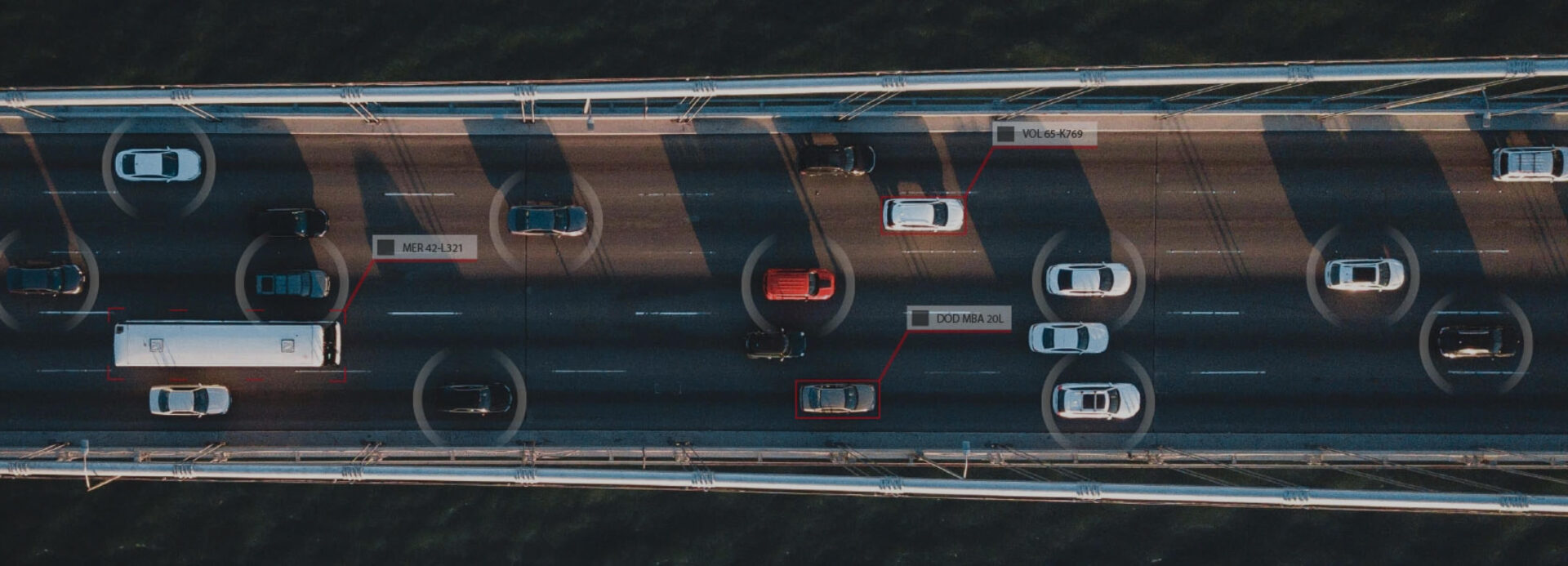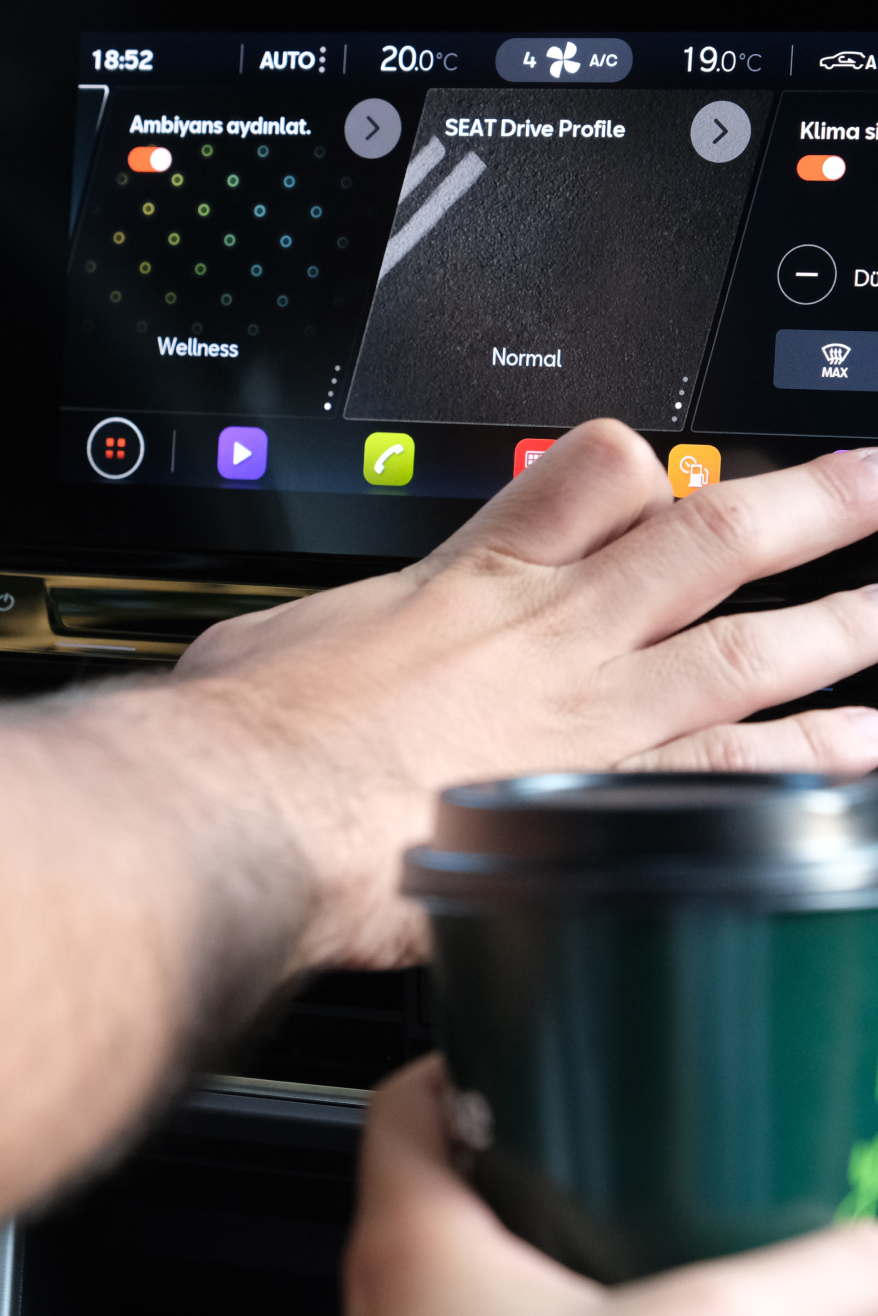Use Connected Car systems to provide in-vehicle infotainment services

We help companies leverage connected car technologies to deliver enhanced services, gain insights from data, and foster collaboration with third parties.
See how we help automotive companies build connected cars
Discover the essential ideas that are driving the progress of vehicle connectivity. Gain a clear understanding of the key concepts that are fueling the development of this technology.

Connectivity
While the automotive industry becomes software-centric, stable and instant connectivity between the vehicle and the cloud is a must. To guarantee uninterrupted connection, automotive companies leverage: multi-cloud globally available infrastructure, dynamically switching connection with different types of connectivity with different coverage: low-earth-orbit satellites, LTE, 5G/6G, or Wi-Fi. The combination of the best available connection and closest geographical part of the multi-cloud infrastructure results in a very low transmission latency.

Vehicle2Cloud APIs
APIs are the bloodstreams of data, allowing for a secure and robust extension of services available in the vehicle. To leverage the network effect of connecting myriads of cars, automotive companies build advanced cloud connectors for easy and scalable handling of hundreds of thousands of vehicles.
Vehicle Twin
Digital Twin enables automotive companies to improve connection resiliency through extended vehicle concept, where the virtual representation of the car state is stored in the cloud. End-users gain better experience, sophisticated retry mechanisms, and the command time-to-live setup that reduces the risk of executing the command after a long delay. With the ability to query the state of the offline car, automotive enterprises can reduce customer frustration triggered by numerous command failings. Vehicles leveraging the Digital Twin concept become independent of the connectivity status and can provide services based on the last known data points.
SDV Architectures Consulting
Software-Defined Vehicle is not just a market trend – it is an actual strategy paving the way for modern vehicles. In order to successfully design and develop a vehicle that fulfills that strategy an OEM has to think end-to-end, starting with hardware, through embedded systems up to the cloud – where all the software and hardware components have to live in symbiosis- moreover, with SDV the development of the vehicle isn’t finished when the car leaves the factory as there are still numerous opportunities to add functionalities and feature even when the car already left the factory. At Grape Up we have experience in conducting business and technical workshops, and as a result of these, helping OEMs create modern SDV Architectures for their New Mobility era software-defined vehicles.
get the insights
Configurable Remote Commands
Connected Cars enable a multitude of new features that can make the life of fleet operators and customers easier and more pleasant. Remote commands allow for opening and closing of the vehicles as well as setting the AC or even starting the vehicle. All done remotely, through a mobile app or fleet operations portal.

See how we empower our customers to deliver customer-centric connected car solutions
ask about case study

Connected Car Initiative: Revolutionizing Telematics through Consulting, Development, and Agile Transformation
Automotive

Designing AI and ML Deployment Platform to Accelerate the Implementation of AI-powered Software
Automotive

Building a Touchless Platform to Improve Customer Experience And Unlock New Revenue Streams
Automotive
Discover how Connected Car solutions impact automotive businesses
Reduce operational cost through OTA upgrades
The future of the automotive industry belongs to the software-defined vehicle. That requires a consistent and robust upgrade strategy. The need for visiting a dealership to install ECU, infotainment, ADAS, or navigation system upgrade starts to become a strain and increasingly generates operational costs for warranty repairs and recalls. With over-the-air upgrades, the software can be replaced with the newest, fixed version without visiting the service center in person.
At Grape Up, we have successfully delivered OTA upgrade systems leveraging IoT Edge devices and Kubernetes Edge system to consistently deploy a new version of the services and downgrade if needed.
Predictive maintenance
The cost of repair when the fault grounds the vehicle is 10x higher than fixing it when the first symptom occurs. That’s why most mobility providers and OEMs build predictive maintenance systems based on machine learning algorithms – to reduce the maintenance cost of vehicle fleets. With sophisticated algorithms based on real-time car telemetry and status information, as well as historical data, some of the costly repairs can be predicted and avoided.
Efficient remote operations leveraging Vehicle Shadow and seamless connectivity
While the end goal for the connected car is seamless connectivity, built upon multiple mediums of communication complementing each other depending on the situation, there are still areas with no network coverage. To mitigate this kind of connectivity problem, vehicle manufacturers are implementing the Digital Twin concept. The vehicle representation in the cloud holds all required statuses and proxies the remote operations. This means that for the end-user the vehicle remote operations are always available and also greatly simplifies the communication. Problematic scenarios are offloaded to the Vehicle Shadow system sitting on top of the IoT platform.
Grape Up helped Porsche build their Digital Twin system for the Connected Car platform.
Improve latency for V2X communication with 5G mobile network
Modern autonomous driving systems highly benefit from internet connectivity. Data coming from in-vehicle sensors is accompanied with the data from the vehicle environment – urban infrastructure, traffic lights, surrounding vehicles, pedestrians’ mobile devices, or internet APIs all help in better prediction of driving conditions.
The ADAS systems require very-low latency to operate – as the reaction time in case of emergency has to be measured in milliseconds. This kind of latency, with improved bandwidth, became a reality with the popularization of 5G technology and networks.
Grape Up helps one of its OEM customers to build a system for managing the connectivity between the vehicle and cloud – starting from the connectivity activation, through lifetime and runtime operations, to data plans management. The system is integrated with all world-renowned MNOs, including Cubic Telecom, T-Mobile, Vodafone, or China Unicom.
Integrate 3rd party apps/services into vehicles to open new revenue streams
Today’s infotainment systems are a bit like smartphones. Navigation, entertainment features, internet browsing, calling, and even detailed car settings are all mostly done through this digital touchpoint.
Allowing 3rd parties to be able to integrate the completely new application and showcase them on the infotainment screen opens completely new revenue streams for the OEMs. Applications like Spotify are heavily used by drivers, but also corporate users may have their fleet management systems integrated. Skoda Auto recently showcased a use case, where commercials of the nearby special offers appear on the navigation system turning their infotainment system into advertising media.
Reach out if you need help with building software for Connected Cars
Do you need to better understand connected car technology?
What is a connected car?

A connected car refers to an automobile that is equipped with internet connectivity and can communicate and share data with external systems. It goes beyond traditional vehicles by integrating various technologies that enable connectivity, such as wireless networks, sensors, and software applications. These cars can collect and transmit data, interact with other devices or vehicles, and provide enhanced features and services to the driver and passengers.
What is connected car technology?

Connected car technology encompasses the set of advancements and systems that enable vehicles to connect to the internet and interact with external devices and networks. It involves integrating various components like sensors, processors, communication modules, and software applications within the vehicle. Connected car technology enables functionalities such as real-time navigation, remote diagnostics, vehicle-to-vehicle communication, entertainment services, and safety features that enhance the overall driving experience.
How is connectivity shaping car technology and design?

Connectivity is profoundly influencing car technology and design in numerous ways. It has revolutionized the driving experience by introducing features like real-time traffic updates, GPS navigation, and in-car entertainment services. Moreover, connectivity enables vehicle manufacturers to remotely diagnose and address maintenance issues, improving overall vehicle reliability and reducing downtime. Additionally, connectivity paves the way for advanced safety features, such as collision avoidance systems and vehicle-to-vehicle communication, enhancing road safety. From a design perspective, connectivity necessitates integrating complex electronics and communication systems seamlessly into the vehicle’s architecture, often leading to more streamlined and integrated designs that prioritize user experience and connectivity capabilities.